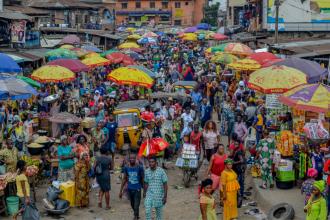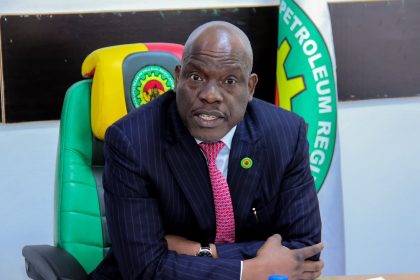Most traders fail not due to poor strategy but because of emotional decisions and poor risk management—success requires discipline, not luck.Professional trading hinges on understanding key concepts like pips, lot size, leverage, and risk-to-reward ratios, and executing trades with calculated precision.Consistent success comes from combining mechanical risk control, mental resilience, and self-awareness through journaling and process-driven habits.The forex market is seductive. It moves over $7.5 trillion daily, operates 24 hours a day, and offers leverage to turn a small stake into significant gains or catastrophic losses. It’s open to anyone with a laptop or smartphone and an internet connection, but it’s not a game of luck.
Here’s the brutal truth: most traders don’t fail because their charts were wrong or because they chose the ‘wrong’ currency pair. They fail because they mismanage risk and let emotions take control. They risk too much when they should be conservative, hesitate when they should act, and cling to trades when they should cut them loose.
The winners? They understand that trading is 20% strategy and 80% discipline. They blend mechanical precision with mental resilience. They don’t just ‘know’ the rules—they execute them.
This is the professional trader’s blueprint—a guide to protecting your capital and confidence.
Speaking the market’s language: trade like you belong here
If you don’t understand the market’s vocabulary, you’re trading blind. And in forex, blind people don’t survive long.
The key terms are simple but powerful. Pips: the smallest measurable move in a currency pair’s price. Most pairs move to the fourth decimal place; JPY pairs move to the second.Lot size: the number of units of currency you are trading. Standard (100,000 units), mini (10,000), and micro (1,000) lots determine the worth of each pip.Leverage: the broker’s loan that lets you control large positions with small capital.These aren’t just random terms—they are linked in a risk chain:
Leverage → maximum lot size → pip value → total financial exposure.
If one link is miscalculated, the whole trade can turn from a calculated risk into reckless gambling. For example, trading with high leverage without adjusting your lot size is like stepping on the gas without checking the brakes.
Key takeaway. Before trading, know precisely how much each pip will cost or earn you.
Sizing your trades like a professional: protect your ammo The most crucial question in trading is not ‘Which way will the market move?’ but ‘How much should I risk if I’m wrong?’
Professional traders answer this question with calculation, not gut feeling. The formula is straightforward:
account equity—your total trading capitalrisk percentage per trade—usually 1–2% for professionalsstop-loss distance—the number of pips between your entry and your planned exit if the trade goes against you.For example, if you have $10,000, risk 1% ($100), and your stop is 50 pips away, you calculate your lot size so that each pip equals $2. That works out to 0.2 lots. Nothing more!
Position sizing is like ammo management for a soldier—you don’t blow all your bullets on one target.
Key takeaway. Position sizing isn’t about chasing the most significant win—it’s about ensuring one trade never knocks you out of the game.
Mastering the art of the exit: cut the losers, ride the winners Many traders obsess over entries but treat exits as an afterthought. In truth, your exit strategy defines your success far more than your entry does.
A stop-loss isn’t just a defensive measure; it’s proof you had a plan before emotion could interfere. The pros place stops beyond logical market structure points—support, resistance, swing highs or lows—and never at round numbers or ‘because it feels right.’
A take-profit is equally calculated. It’s not where you ‘hope’ the market will go—it’s where market structure suggests the next likely reversal or pause will occur.
The danger zone is what happens after you place your stop, for example:
moving it further away to ‘give the trade more room’closing the trade too early because you got nervousremoving the stop entirely because ‘it’s bound to turn’.Key takeaway. Discipline after placing the trade is just as important as discipline before you enter the trade.
Let the risk-to-reward ratio be your compass—trade for the math, not the thrill
Your risk-to-reward ratio (R:R) tells you whether your trading plan makes sense over the long term. It compares the size of your expected win to the size of your possible loss.
At 1:1, you must win more than half your trades to make money.At 1:2, you can win only 40% of trades and remain profitable.At 1:3, even a 25%-win rate keeps you in the green.Trading isn’t about being right often—it’s about making more when you’re right than losing when you’re wrong.
Conquering the inner game: the market inside your head No matter how sharp your technical skills, the biggest battle you’ll fight is with your own mind.
Fear causes hesitation, second-guessing, and early exits. Greed fuels oversized positions, revenge trading, and chasing moves after they’ve already run.
Worse, these emotions are amplified by cognitive biases, such as:
loss aversion—losses hurt twice as much as gains feel goodoverconfidence—a winning streak tricks you into taking reckless tradesconfirmation bias—ignoring evidence that contradicts your bias.The market preys on these weaknesses. Your only defence is awareness and preparation.
Thinking in probabilities: trust the process, not the outcome
Mark Douglas’s classic Trading in the Zone is built on one truth: in trading, anything can happen. A perfect setup can fail, a bad one can win. Outcomes are random in sequence.
His advice? Stop trying to predict the future trade-by-trade and focus on executing your edge consistently over many trades.
Dr. Brett Steenbarger complements this with process-driven discipline. He focuses on building daily habits, feedback loops, and review routines so that discipline becomes automatic.
Key takeaway. The combination of probability thinking and daily discipline creates a trader who is not shaken by short-term results.
The journal, your most honest trading partner: numbers don’t lie—they tell stories
A trading journal is not just for recording wins and losses. It’s for dissecting every trade and asking yourself important questions.
What setup did you take?Where did you place your stop and target?Did you follow your plan?How did you feel during the trade?When you review your journal, patterns emerge—not just in the market but also in yourself. You’ll see which setups bring consistent profits and which emotional triggers sabotage your results.
Key takeaway. Journaling turns invisible mistakes into visible solutions.
A case in discipline: when patience pays Consider a trader with a $25,000 account risking 1.5% ($375) on a GBPJPY short. The setup is clear: trendline break, retest at resistance, bearish engulfing candle. The stop-loss is 75 pips away, the target is 200 pips below, giving an R:R of 1:2.67.
The position size is calculated at seven mini lots. Early in the trade, the price moves 40 pips against them. This is the moment discipline is tested. Many traders would exit to ‘protect’ their equity. This trader holds—and is rewarded when the price hits the target for a $750 profit.
The journal entry notes: ‘I followed the plan exactly. Emotional discomfort subsided once I trusted the stop.
The blueprint for consistent success—numbers + mindset + discipline
Thriving in forex isn’t about magic indicators or secret strategies. It’s about weaving together three critical threads.
Mechanical precision: sound risk management, proper sizing, and logical exits.Mental resilience: accepting uncertainty and controlling emotions.Self-awareness: learning from every trade via an honest journal.When these work in harmony, you break the boom-and-bust cycle and replace it with steady, sustainable growth.
Final takeaway Master the maths, master yourself, and the market will take care of the rest.
Disclaimer: This article does not contain or constitute investment advice or recommendations and does not consider your investment objectives, financial situation, or needs. Any actions taken based on this content are at your sole discretion and risk—Octa does not accept any liability for any resulting losses or consequences.
Octa is an international broker that has been providing online trading services worldwide since 2011. It offers commission-free access to financial markets and various services used by clients from 180 countries who have opened more than 61 million trading accounts. To help its clients reach their investment goals, Octa offers free educational webinars, articles, and analytical tools.
The company is involved in a comprehensive network of charitable and humanitarian initiatives, including improving educational infrastructure and funding short-notice relief projects to support local communities.
Since its foundation, Octa has won more than 100 awards, including the ‘Most Reliable Broker Global 2024’ award from Global Forex Awards and the ‘Best Mobile Trading Platform 2024’ award from Global Brand Magazine.






